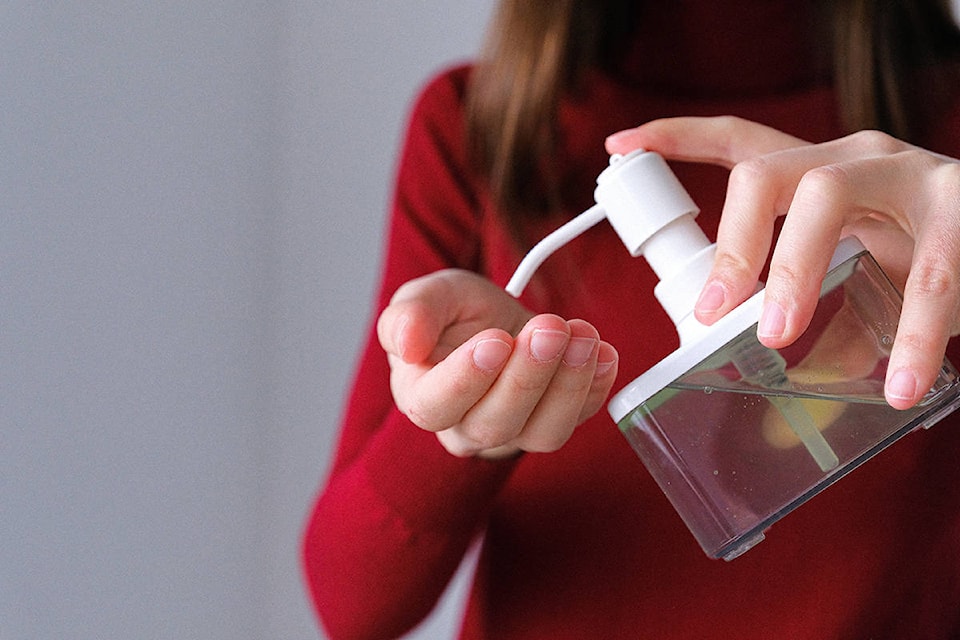The BC Centre for Disease control (CDC) has seen a spike in calls about hand sanitizer exposure and ingestion in the past couple of months.
On Tuesday (May 26) the CDC’s Drug & Poison Information Centre said calls involving hand sanitizer exposure in children under five went up from an average of less than two a week in January and February to seven a week in April. During the same time period, calls about adults ingesting hand sanitizer went up from once a week to roughly three or four times a week.
READ MORE: B.C. poison control officials see spike in disinfectant exposure calls amid COVID-19
Sales and use of hand sanitizer has gone up drastically in recent months as people seek to keep their hands germ-free amid the COVID-19 pandemic. According to Statistics Canada, hand sanitizer sales rose 792 per cent during the first week of March, compared to the same week last year. By April 11 sales had slowed somewhat, but only to a 345 per cent increase compared to the year prior.
READ MORE: Post-COVID grocery store sales high but below the mid-March peak, StatCan says
Dr. Tom Kosatsky, the medical director of Environmental Health Services at BCCDC, said that although alcohol-based hand sanitizer area good option when soap and water aren’t available, they can be dangerous. Hand sanitizer must have at least 60 per cent alcohol to be effective, according to Health Canada, and that can make it deadly in large quantities and dangerous even in smaller ones.
“However, as these products become more a part of our daily lives it’s important to be careful when storing them and using them, especially if there are young children in your home,” Kosatsky said.
This is especially important now that breweries and distilleries have been authorized to make hand sanitizer, which can sometimes come in packaging that appears to be a beverage.
“These sanitizers are liquid, rather than gel, and are sometimes packaged in bottles or cans that look like beverage containers, making them easier to consume by accident,” he said.
READ MORE: All B.C. distillers now authorized to make hand sanitizer as COVID-19 leads to shortages
The CDC recommends taking several safety measures if you have hand sanitizer in your home:
- If you purchase sanitizer in a package that could be mistaken for a beverage container, pour the hand sanitizer into a different container (such as a spray bottle) that has been emptied, cleaned, and dried.
- Alternatively, replace the cap of the existing bottle with a pump to make the product look different from drink containers.
- Make sure all containers of hand sanitizer are labelled clearly.
- If you have young children in your home, avoid buying hand sanitizers that may be more attractive to kids, such as hand sanitizers that are scented or contain glitter. Always store hand sanitizer out of reach of children, pets and people with dementia.
If you think someone has swallowed any amount of hand sanitizer, call your local poison control centre. For the BC Drug and Poison Information Centre, call 1-800-567-8911.
Like us on Facebook and follow us on Twitter.
Want to support local journalism during the pandemic? Make a donation here.
